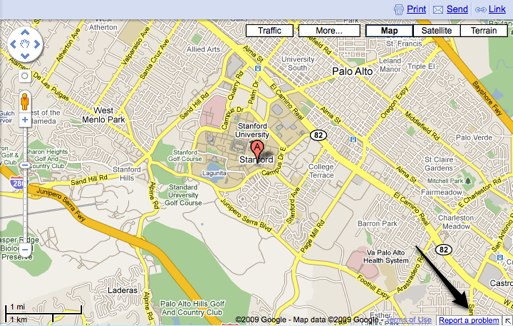
Google Maps been steadily crowdsourcing information from users and authoritative sources that who can share detailed information about the changes in the physical world, such as new roads, water bodies and more. Because of this flux of information, Google has released a new base map dataset.
Thanks to info from both the USDA’s Forest Services and the US Geological Survey, Google has made a significant update to its maps, adding more detail about water bodies, parks, roads and more. For example, with the new data sat, you can now zoom in on roadways to figure out how large a road is. And Google has added in-depth info on locations like college campuses and bike trails.
The way Google crowdsources data from users has also been upgraded with the launch of a new tool that lets you communicate directly with Google about any updates that you think need to be made to our maps. On Google Maps, you’ll now notice a “Report A Problem” link to the bottom right of the map where you can easily let Google know if there have been changes to a particular location, destination or roads. Google says that they will confirm suggestions with other users and data sources and will be able to determine the edit within a month.
Previously, you could move map markers on maps and add locations to maps, but this is the first time that Google is deeply engaging user input to make maps more detailed and precise. Google has continuously iterated Maps to make the feature more useful, recently adding more details on traffic conditions. Perhaps Google is gearing Maps up for head-to-head competition from Apple’s new mapmaker.
Interestingly, We’ve heard that Google Maps has ended its partnership with digital map maker TeleAtlas in the U.S., but a spokeswoman for Google says that TeleAtlas continues to provide data in dozens of countries around the world for Google Maps.